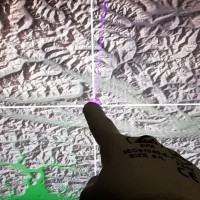Quantitative analysis of touchscreen operation in a moving and vibrating environment.
While already well underway, a number of unsolved challenges still stand in the way of successful implementation of touchscreens in the cockpit. From an interface design perspective, the direct manipulation offered by touchscreens has shown to be capable of improving certain in-flight tasks, while perhaps being less suitable as a replacement for hardware input devices in others. Another critical challenge comes from using touchscreens as input devices in a highly dynamic and turbulent environment as an aircraft. Most notably, involuntary inputs will be given on a touchscreen through BioDynamic FeedThrough (BDFT) and accelerations working on pilots’ arms may significantly complicate any task that is to be performed on a touch sensitive cockpit display.
In this project, we use human-in-the-loop experiments in the SIMONA Research Simulator (SRS) at TU Delft to investigate the main issues and sensitivities of touchscreen operation on the flight deck. For example, we use carefully designed experiments to quantitatively measure the effects of motion disturbances on performing a “dragging” task (e.g., waypoint repositioning) on a touch sensitive cockpit display. With multisine motion disturbance signals, applied in different motion axes (e.g., surge, sway and heave) separately, we can apply system identification to explicitly measure BDFT dynamics and their perturbing effect on touchscreen operation.



